When I look at a commercial port, …
I put on my sailor’s glasses and … imagine the relief at the bottom of the water. I ask myself where the tide is and whether the ships are light or full. I measure the mass of water filling the basin. I wonder which dock is deep enough for which type of ship. I think about the currents and winds that push the maneuvering ships. I look to see if the harbor master’s office is well placed to monitor movements on the water. I look for tugboats, pilot boats and dinghy barges…
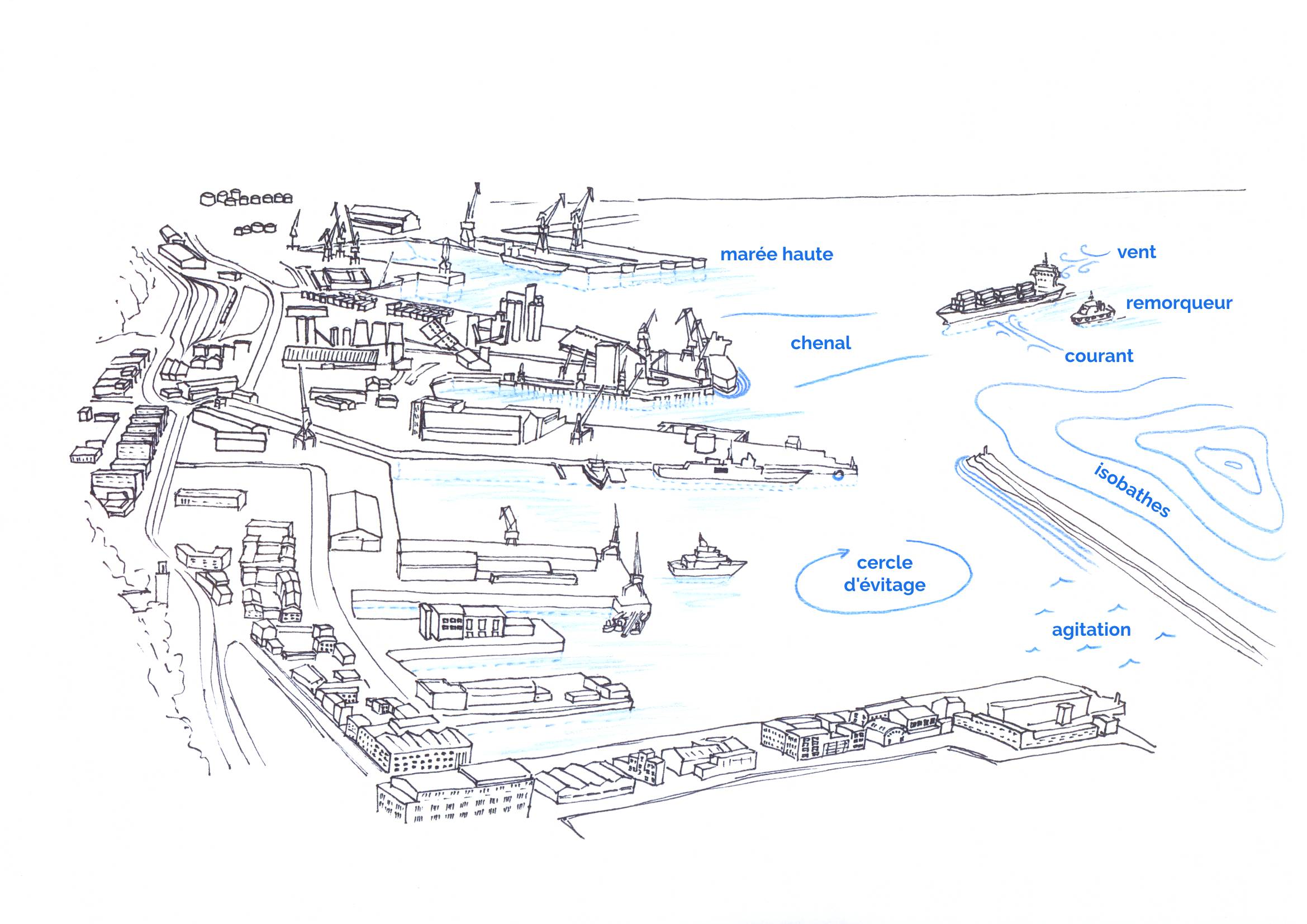
I put on my logistician’s glasses and … I see floating stocks on the ships and transit stocks on the docks. I wonder what the turnover rate is in warehouses and silos. I think about the loading and unloading rates of cranes and hoppers. I see not goods, but packaging : liquid bulk, dry bulk, containers, big bags and so on. I imagine all the ramifications of the road and rail network that connects the port to the entire continent.
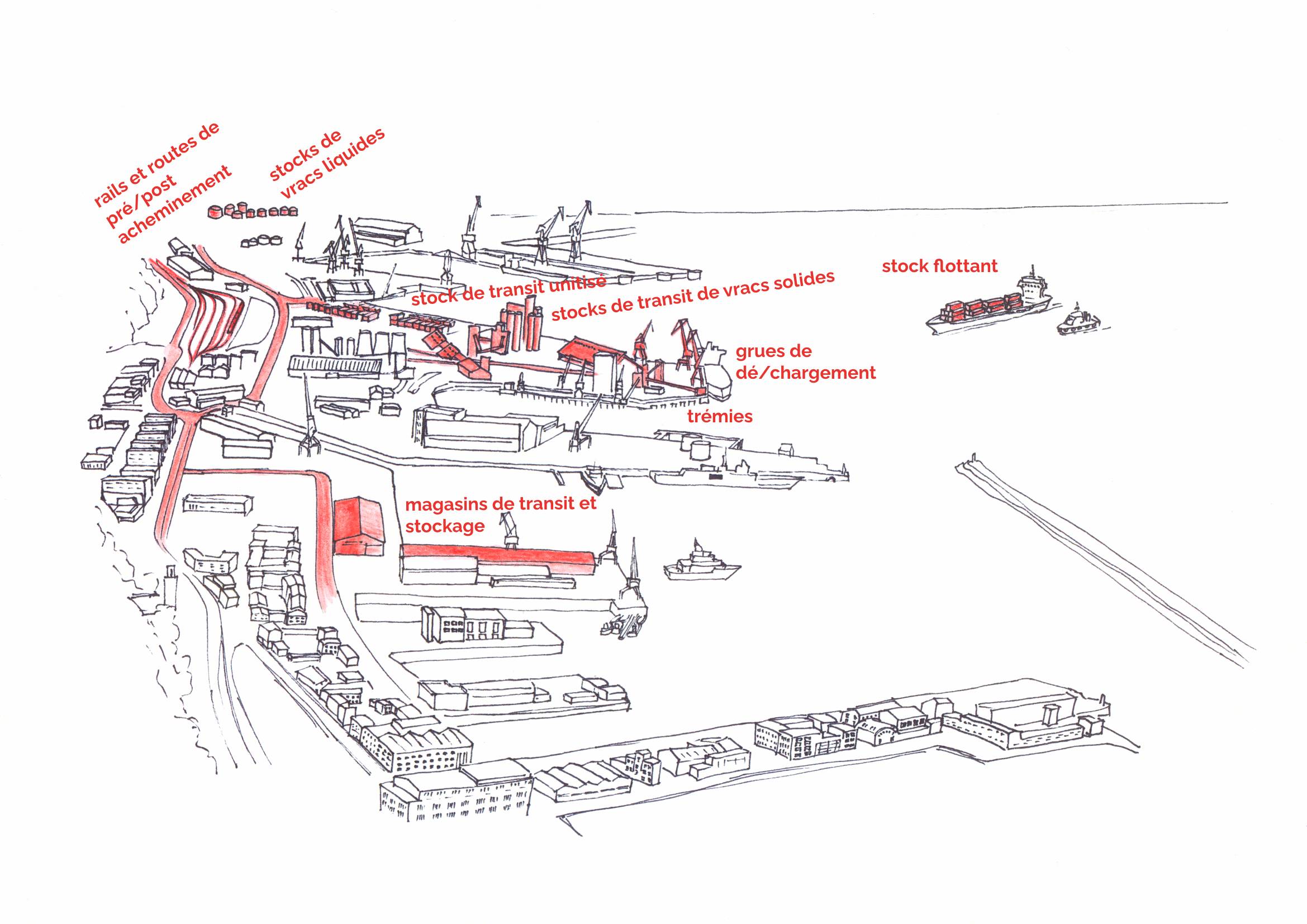
I put on my engineering glasses and … I look at the materials : concrete, steel, rock. I think about the lifespan of the structures, the pounding swell, the corroding salt. I imagine the layers of material crushing under the uniformly distributed weights, punctual, static, dynamic. I imagine the steel bending within the slabs on piles. I think of the depth of these piles in the mud, of the embankments that grow on them. I think of the water that seeps in and out, and breathes through the sheet piles to the rhythm of the tides. I wonder who among the structures absorbs the energy of the sea and the ships, who reflects it and how it dances in the docks.
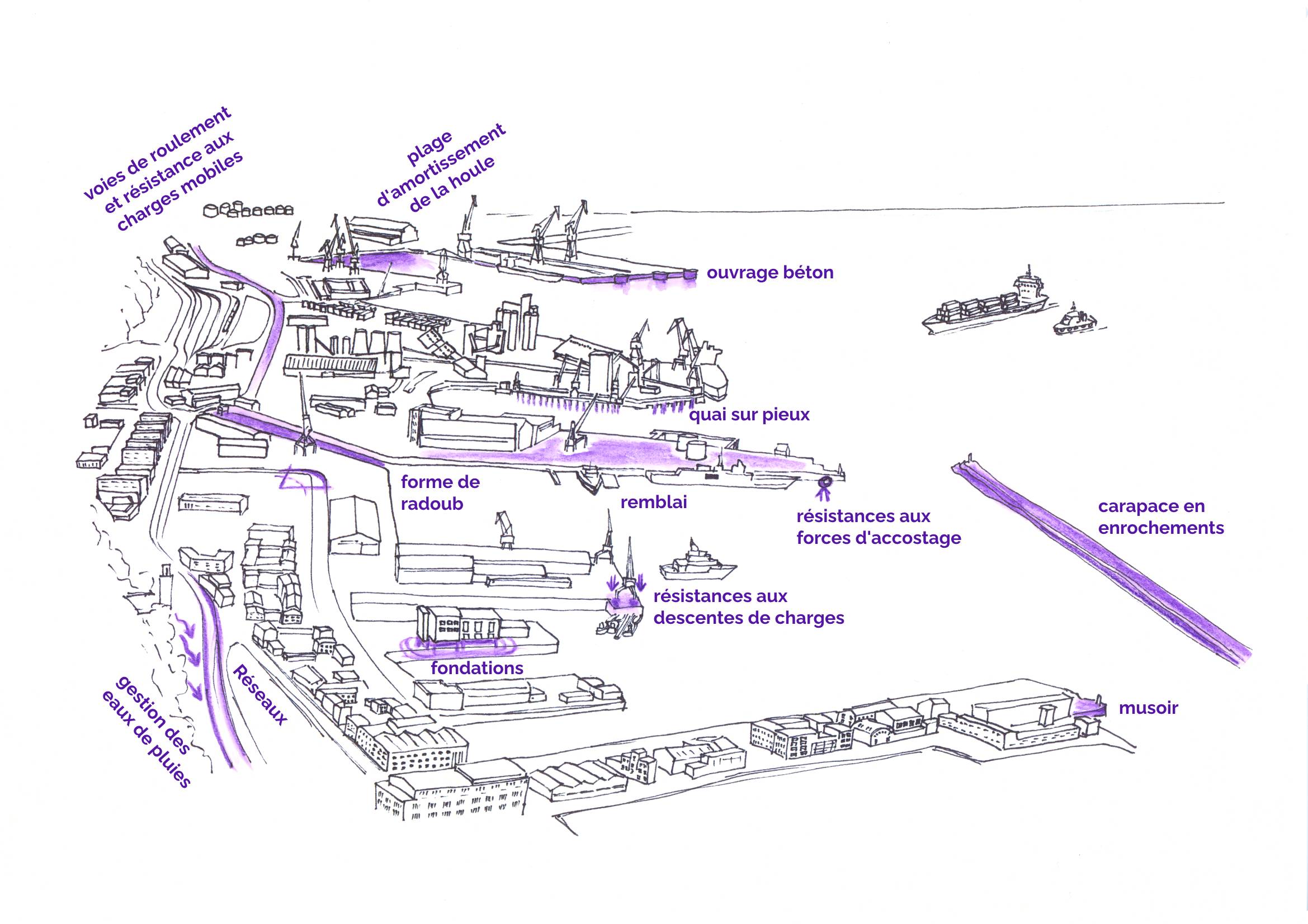
I put on my economist’s glasses and … I think about the companies, the factories, the consumers who live on the land side of the territory. I wonder what the ships carry and where they come from. Whether they’ve circumnavigated the globe to supply us with foreign products, or whether they’ve come from the neighboring coast in a pendular ballet. I imagine the products that arrive, are processed and leave again. I think of the companies, factories and consumers who live on the horizon, behind the sea. I wonder with which other country our economy resonates.
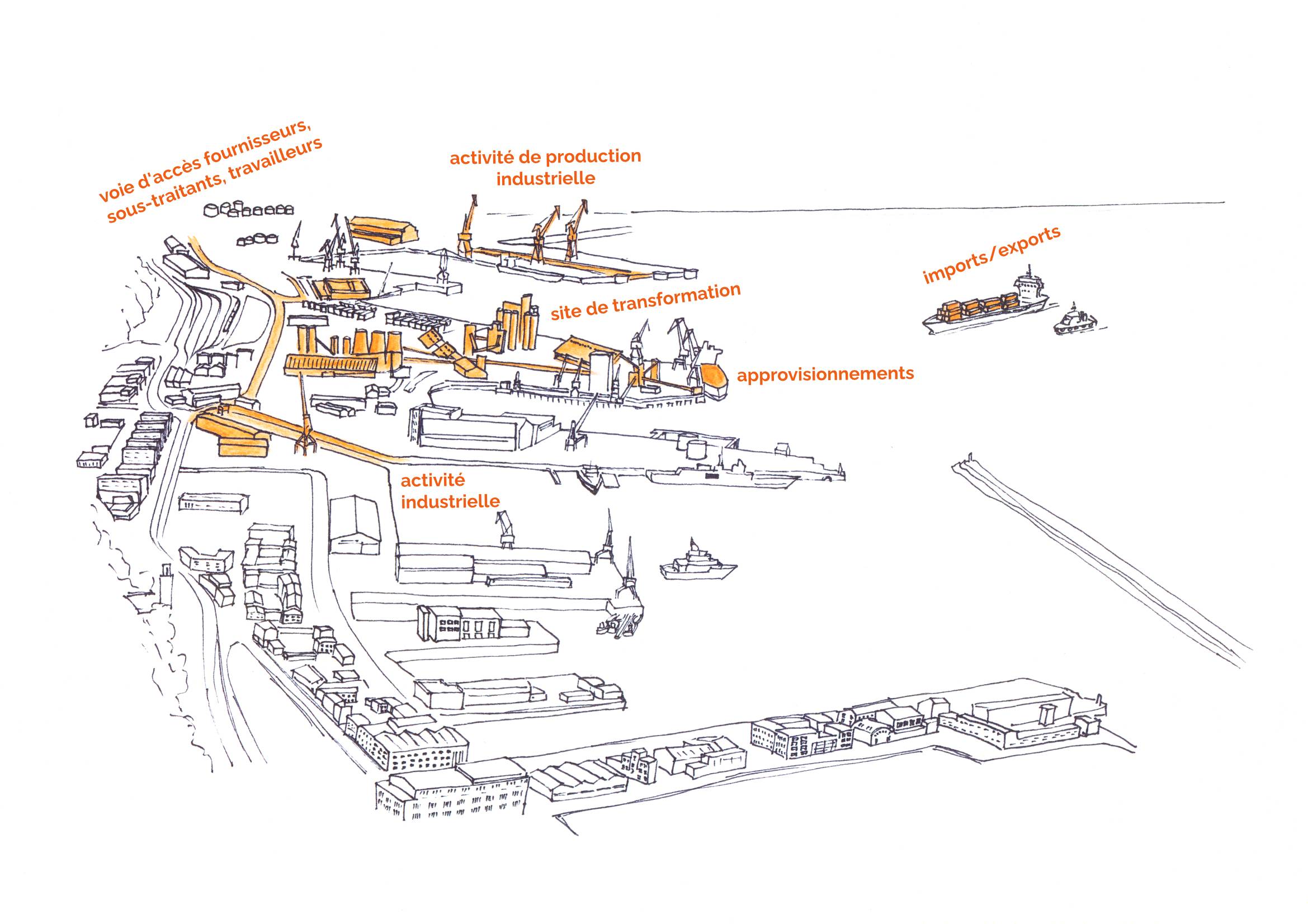
I put on my environmentalist’s glasses and … I imagine under the waves the mixtures of water masses. The mixtures of pollutants and nutrients and all the plants and animals that breathe liquid. I think of the invisible noise that circulates, reverberates and diffuses beneath the surface. I watch the wind blow and disperse dust, particles and night light. I listen to the sounds and think of the noise carried by humidity when sky and sea mix. I think of all the water and energy consumed by this human-made giant. I look for greenery with my eyes and imagine the connections that nature always manages to make, invasive seeds that want to germinate, amphibians that want to cross the road, birds that nest anywhere. I imagine them searching for their way between human creations with questioning eyes.
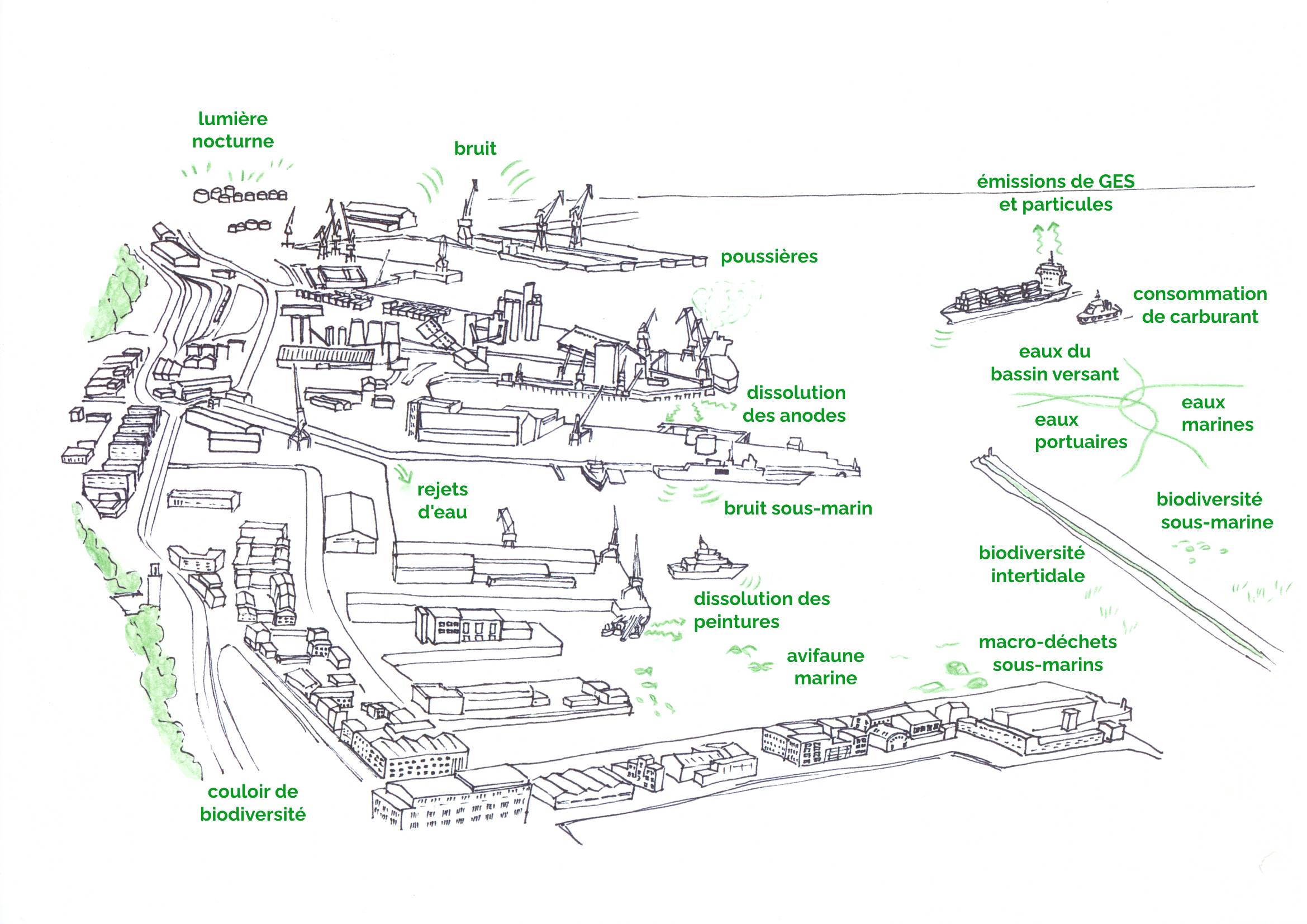
I put on my city planner’s glasses and … I look at the city sliding towards the sea and transforming itself into a harbor without the demarcation line being quite clear. I look at the crest line of buildings, silos, workshops, stores and imagine the history and successive layers of buildings. I see the colors, geometries and materials of the facades and observe whether they are a disorganized patchwork or a skilful uniformity. I look at the circulation patterns and wonder how easy it is to reconcile all the uses of this space. I look to see if the harbor is a barrier or a gateway to the sea. I look for openings and places where you can see far.
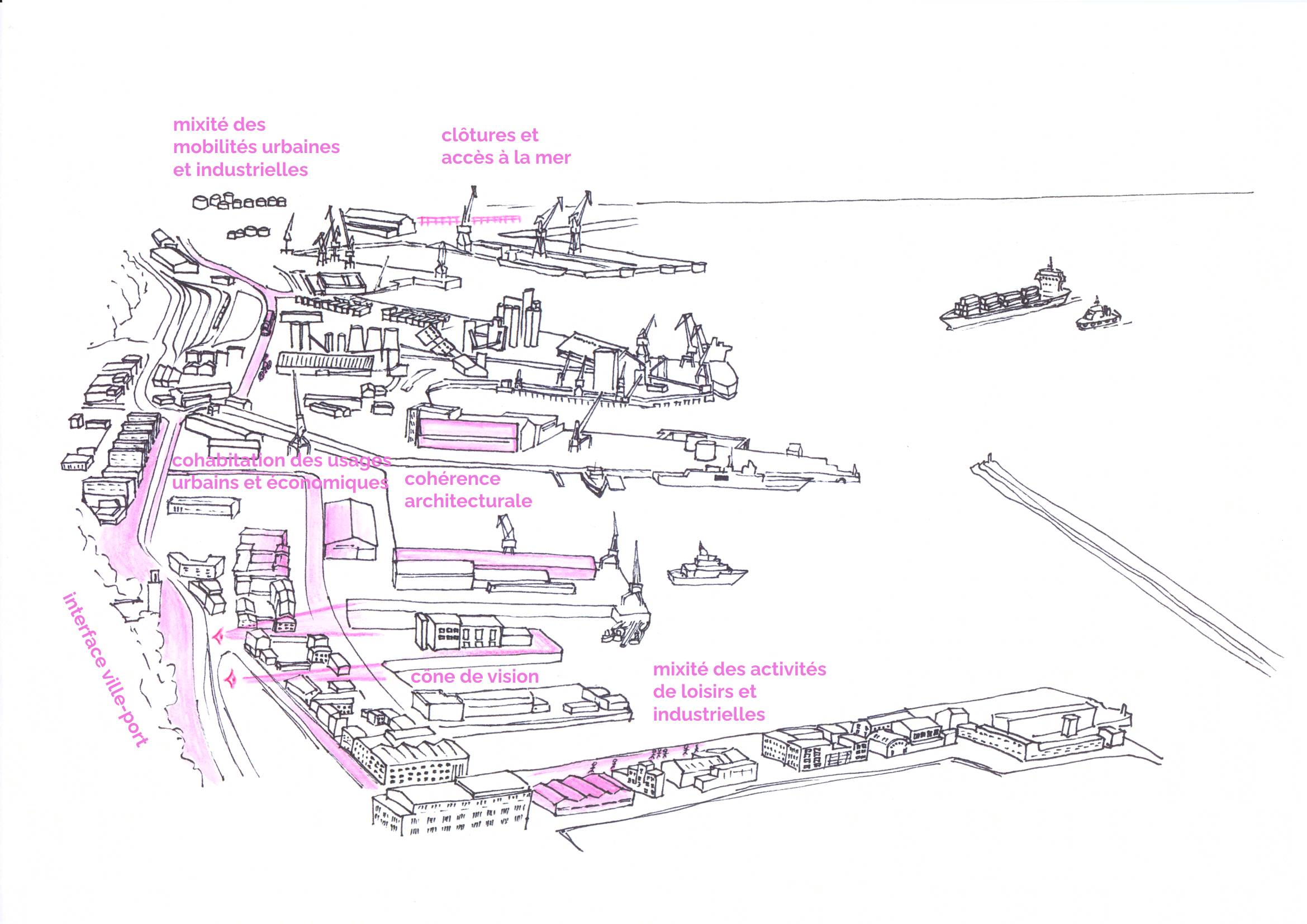
I put on my sociologist’s glasses and … I see all these people coming and going. I imagine those who arrive from faraway lands. I think of those who are still here. I see defiance and solidarity, decompartmentalization and interdependence between people of the sea and people of the land, between those from here and those from there, between those of physical labor and those of strategic reflection, between those of industry and those of craftsmanship, between those who feed the world and those who swallow and crush it. I see the carefree strollers and the preoccupied workers. I see the tolerance of all these differences, together, on the quays.

And then I put all these frames down and let myself be touched by beauty. Without thinking anything, I try to open myself up to the senses and stop thinking. I watch this almost magical ballet of giants that, despite their weight, float and glide in the water. These carts, trucks and trains that color the earth with their comings and goings.

Immense structures that, despite their graceful appearance, lift the masses into the air. Geometric lines whose patterns carry us into a world of abstraction. The multicolored palette of light that plays with water, sky and metal. The thousand and one faces shaped by the elements, outfitted in uniforms of every color.
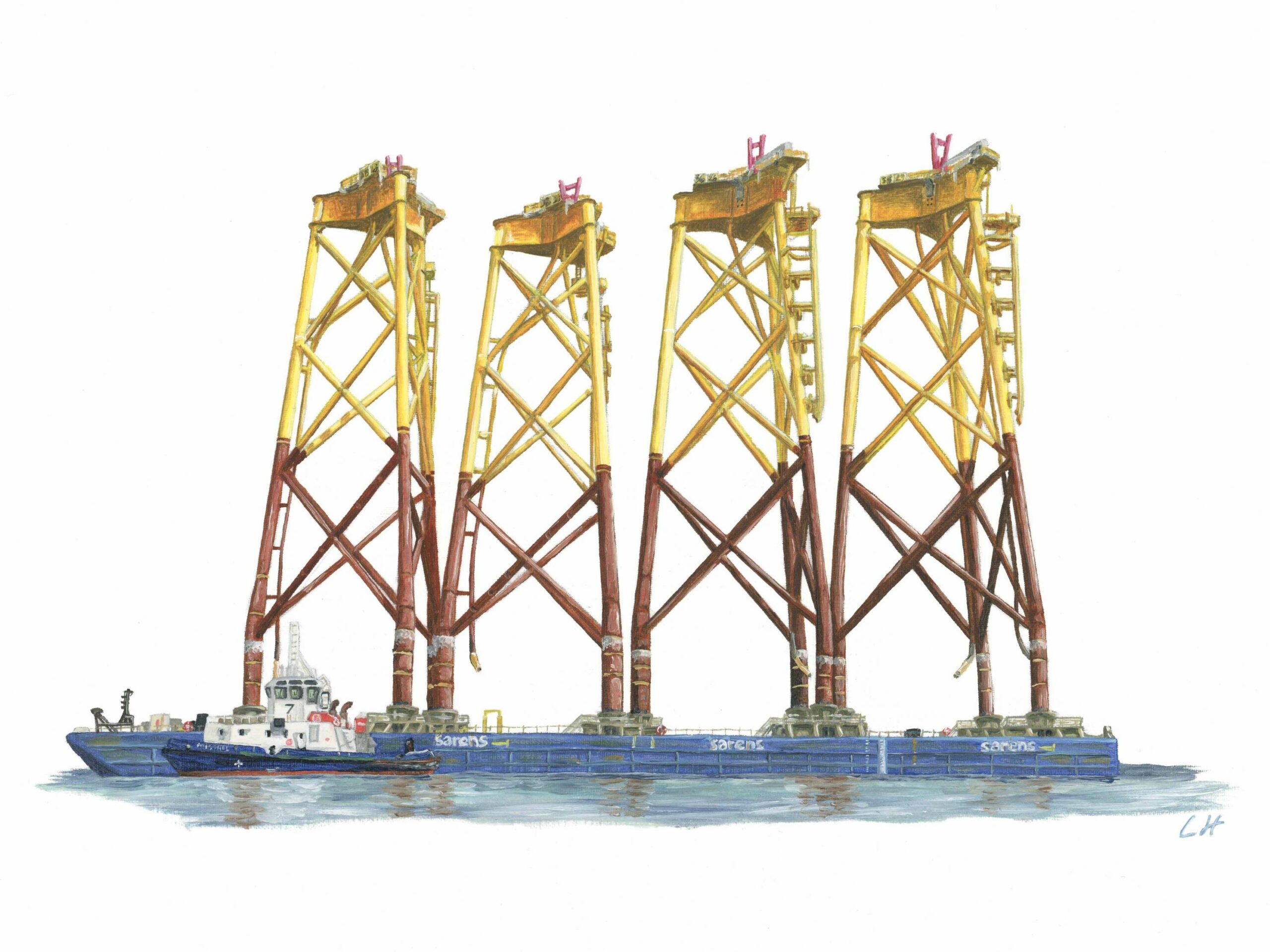
I love ports because they’re multifaceted, and to understand them you have to understand the world.
Do harbor landscapes move you?
And did you recognize the port on the aerial views? (NB : any resemblance to a Breton port is not accidental).
PS : You can follow me on instagram, pinterest, facebook or linkedin or subscribe to receive articles directly in your mailbox.
